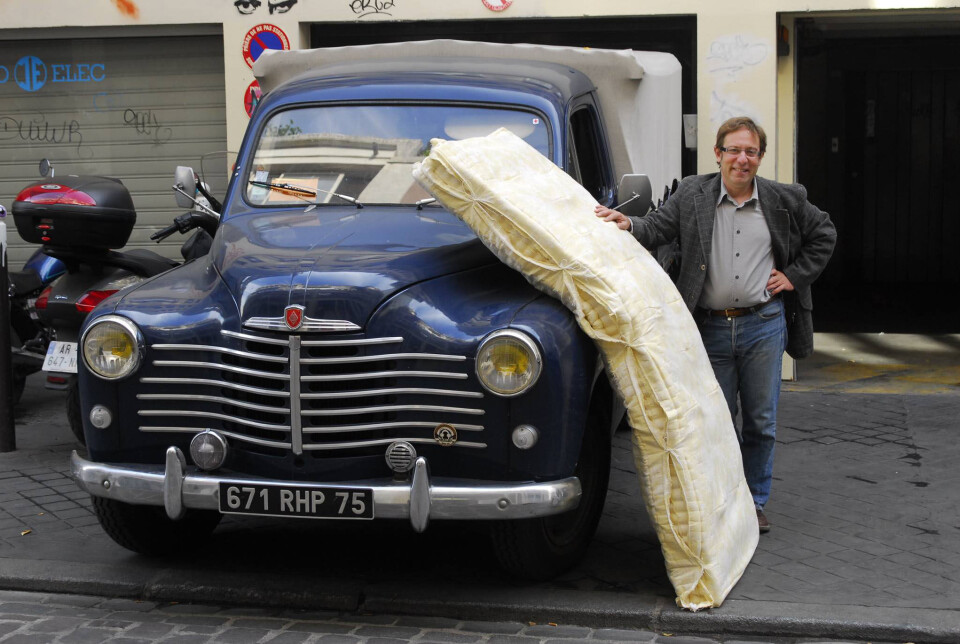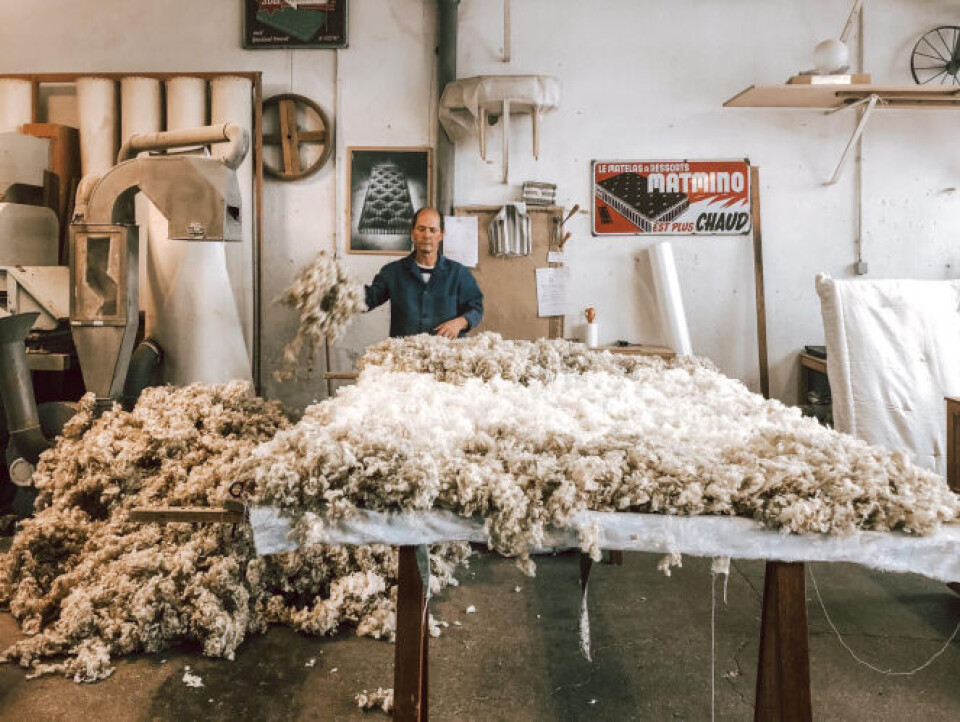-
Breton name bowls: 'People are no longer interested in the traditional craft'
These bowls have become a staple of French cabinets and breakfast tables, but how are they really made?
-
French crafts in focus: Chaudronnier
Metalworker Jean-Louis Martini specialises in building and fixing vehicles, particularly motorcycle parts
-
Vegetable base for new fake leather invented by French scientist
No plastics used in innovative new product, called Phyli
Meet Paris' last artisanal mattress maker
Patrice Sébille runs the only 'atelier' of its kind left in Paris. He stepped in to save an ancient skill, but is finding it tough to keep going

Artisanal mattress making used to be a commonplace trade, with small workshops throughout France producing this basic hand-made commodity out of 100% natural materials which could be refurbished every ten or so years to last a lifetime.
Now there are very few matelassiers in existence, and just one running in Paris. Les ateliers le Briand is the last mattress workshop in Paris.
How did you become a mattress maker?
The Le Briand mattress workshop was founded in 1880, and the skills were handed down from generation to generation until the last owner, Jacques Le Briand retired.
I was trained as an engineer and I was seduced by this ancient skill. I did not want to see the workshop close its doors and so I took it on to keep it alive and learnt the skills from Mr Le Briand. I work with my colleague Bruno Gallegari.
What are the advantages of a traditional mattress in wool?
It has a very, very low carbon footprint, the lowest you can have for a mattress, because only natural materials are used.
The mattress provides the best in comfort because it is made to measure. If you buy a mass produced mattress you can only choose between a limited range of softness to hardness, whereas I can make one to suit the client’s individual requirements. I can also make it to exactly the dimensions and shape anyone desires.
Anything is possible! We give clients all the information they need to make their choice and tell them the advantages of this type of mattress.
Wool has wonderful insulation properties. It keeps your bed warm in winter and cool in summer. Above all wool absorbs the humidity from the sleeping person while keeping its ability to insulate and so you sleep in a bed which is always dry.
It is also economic because when it comes to the end of its life, the mattress does not have to be thrown away like an industrial one.
What happens to them?
After about ten years, a client can bring me their mattress to be refurbished.
I will change the outer, dirty material casing but I can re-use the same wool by cleaning it and re-carding it. A double mattress is filled with around 27 kilos of wool and only about a kilo will be reduced to dust during its first lifetime, so only a very small amount of new wool will be needed to give a second life to a mattress.
How do you make a mattress when there is such a great deal of wool to manipulate?
The first task is to card the wool, using a machine which opens the fibre and orientates them. It is like a giant comb, and it has the same effect as running a comb through your hair. That is a very important process.

Then our job involves spreading the wool out evenly, and sewing it into the cloth exterior. It is something you learn by doing it.
You know whether you have got it right both by eye and the feel under your hands. It is difficult to describe in words. All the stages are designed to bring the wool into the casing. Little by little you sew the vast volume of wool into the material, until the mattress has reached its final size.
I use very long needles which can go right through the thickness of the mattress in the middle and then smaller ones to sew around the edges.
Do you need to be strong?
It is certainly a physical job. It takes about a day to make one. Sometimes a little longer, if it is a more complicated order.
The biggest one we ever made was 6m by 3m, not for an actual bed, but for an exhibition. That was a huge challenge and very difficult to do. It took three of us a week to make.
What type of clients buy your mattresses?
There are all sorts of people for different reasons. Older clients who have always slept on a traditional mattress come to us because they do not want to change their habits of a lifetime.
Some clients need a personalised mattress because they have beds with unusual dimensions, which may be old ones or contemporary designer beds. There are some who buy them for their children, because they do not want them to be exposed to noxious substances in industrially produced mattresses.
Then there are people who buy them because they are sustainable and out of respect for the planet. Clients cite this more and more as a reason for a purchase, but though they are not a luxury item, handmade mattresses still represent “More and more clients are buying our mattresses because of sustainability and respect for the planet a certain cost, around €1,000 for a double, and so they are not always within budget for someone who would like to buy one for environmental reasons.
Where does the wool come from?
The sheep are from the south of the Massif Centrale in the Auvergne. The wool has to come from a farm with sheep which produce the right type of wool which is higher quality than that needed for clothes.
Even two sheep from the same race will not give the same quality of wool, if they have been bred under different conditions, so finding the right supplier is vital.
Today farmers choose sheep breeds for meat or milk and not for their wool. They have to shear the sheep yearly for the health of the animal, but it is nearly always impossible to recover that cost from selling the fleeces, which are almost worthless on today’s market so they will often simply destroy the wool on site.
So the sheep which originally gave fine wool have now almost disappeared from our farms. We can do nothing about it. Things are different now.
How many mattresses do you make a year?
We make between three hundred and fifty and four hundred mattresses a year.
There is a demand, but it has been difficult over the past three years. In 2018 we do not know why, but there were far fewer customers than usual. 2019 was complicated because people were reticent to go out and buy because of the Gilets Jaunes demonstrations and then 2020 has been marked by Covid 19.
If, in the future, I can no longer get the wool or the material for the mattresses I make I will have to stop. So we do not know what the future will hold, and it is all a bit uncertain.
Do you regret taking on the business?
No, because I love the work we do and I am proud of the mattresses we produce. But it is getting far more difficult to be an artisan producing functional rather than fashion or artistic goods. I have seen a change in the mentality of clients over the past five years as they become less and less understanding about the difficulties faced by making handmade products.
They are so used to getting what they want by simply clicking on a mouse that they find it difficult to have to wait a few days longer for their mattress if sometimes we have problems getting materials from our suppliers.
We enjoy our trade, and our mattresses are far better for the planet than ones bought off the peg, but society is changing, and we work in a far more difficult context than we used to.
www.le-briand.fr
Related stories
Meet the bell makers of France continuing 300 years of craft
France’s last chess piece maker saved by Netflix show and lockdown
























